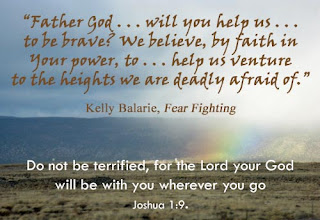Drives through the
Andes were the stuff of legends—not myths, not made-up tales, but the histories
of dozens of families. (If you missed last week’s post, click on Of Andean hairpin turns: I tried to stifle my hysteria.)
Today you could
sit down with anyone who spent time in Lomalinda and he’d tell you hair-raising
accounts of journeying through the Andes—stories about upchucking, long
delays due to mudslides, other delays at police checkpoints, and reports of filthy
bathrooms along the way.
But especially
you’d hear stories about the dangers of the trip. You’d hear about urgent
prayers for safety.
Linda Wheeler
Hollingsworth recently told me of bus trips she and her family took several
times through the Andes from Pasto to Puerto Asis while, for many years, her
parents served as linguists and Bible translators among Colombia’s Siona
people.
Linda writes,
“The bus was
usually packed with standing room only, shared with all manner of livestock and
people . . . and to top it off, loud Colombian music with
the occasional translated Cindy Lauper or Stevie Wonder thrown in. My favorite
was ‘Solo Llamé a Decir te Quiero.’ [Note from LT: If I remember my Spanish
correctly, I think that’s I Just Want to Say I Love You.]
“We could look out
the window and see down the mountain in a fog-covered abyss. One of the dual
back tires would often hang over the edge. The driver drove pretty fast. . . .”
Read that
paragraph again. Imagine sitting beside Linda on that bus.
At that point in
the recent conversation with Linda, her older brother, Jim Wheeler, spoke up. “That
was the craziest bus ride I remember! I think we did it three or four times.
“The really wild
rides were in the old chiva buses. The driver would stop at El Mirador where we
had to wait on the one-way traffic to make it up the cliff/mountain. . . .
“I remember
walking with [brother] Franky over to the edge of the lookout. We couldn’t see
the bottom because there were too many clouds in the way, but we could look off
and see the broccoli-like jungle thousands of feet in the distance.”
After waiting for
the one-way oncoming traffic to finish, “the driver’s assistant would call
everyone into the bus. The driver would light a candle at the nearby shrine,
jump into the driver’s seat, cross himself, and then gun the engine for the
wild ride down.
“We could see the
wheels hanging off the edge. . . .
“What really
freaked me out was looking up as we went down the switchback road and seeing
saplings sticking out of the mountain on the underside of the road above us.
Then I realized that [moments earlier] we had been riding on that same stretch
of road in a six-ton bus!
“We could see
crosses all along the way where travelers must have fallen.
“One time I was
sitting toward the front of the bus. The driver’s assistant looked at me,
pointed to his eyes, pointed down the side of the mountain, then shook his
finger, ‘No, no, no!’ Better not look down on that trip!
“Often the
assistant had to get out and guide the driver around a hairpin turn. That’s
when the wheels would really hang over the edge!
“We were always
very glad to get to the bottom!”
I guess so, Jim! I
guess so! Thanks for sharing your stories with us, Linda and Jim.
These accounts
make me tremble.
How about you?
Can you imagine
being a parent in such a locale
and pushing hard to carry out work God had led you to do?
While
contemplating that, I remind myself that God’s ways are not always our ways. “‘For
my thoughts are not your thoughts, neither are my ways your ways,’ declares the
Lord. ‘As the heavens are higher than the earth, so are my ways higher than
your ways and my thoughts higher than your thoughts’” (Isaiah 55:8-9 NIV).
His ways are
higher than ours—that is, He doesn’t look at life in the same way we do.
When His ways crash
against our ways, we need to do a “doggie head tilt.” (Mike Metzger: “If your head never tilts, your mind never changes.”) When God asks us to do something
that seems crazy, we need to look at life from a different angle—from His
angle, not ours.
Jesus warned those
who wanted to follow him, saying “Count the cost before you set out” (Luke
14:28).
“Large crowds were
traveling with Jesus, and he turned and said to them, ‘If anyone comes to me
but loves his father, mother, wife, children, brothers or sisters—or even
life—more than me, he cannot be my follower. Whoever is not willing to carry
his cross and follow me cannot be my follower. If you want to build a tower,
you first sit down and decide how much it will cost, to see if you have enough
money to finish the job. If you don’t, you might lay the foundation, but you
would not be able to finish. Then all who would see it would make fun of you,
saying, ‘This person began to build but was not able to finish’” (Luke 14:25-30,
NCV).
Those who decided
to work in Colombia had taken those verses and Proverbs 20:25 seriously: “Don’t
trap yourself by making a rash promise to God and only later counting the
cost.”
I believe each
family that relocated to Colombia to serve God, like Linda and Jim’s parents
did, counted the cost ahead of time. One of those costs was harrowing trips
through the Andes, and while over the years some Lomalindians did suffer
injuries, some of them serious, I’m not aware of any deaths.
In the 1970s, ’80s,
and ’90s, our colleagues experienced much worse dangers than Andean roads,
especially at the hands of Marxist guerrillas.
But they kept
working there even when it was dangerous, even when it didn’t make sense.
At such times, Oswald Chambers’ perspective helps us make that necessary doggie head tilt: “Faith is
deliberate confidence in the character of God whose ways you might not
understand at the time.”
What courage my
colleagues chose!
What faith they
demonstrated!
And what a privilege
God gave me
to work alongside them and learn from
them.





No comments:
Post a Comment